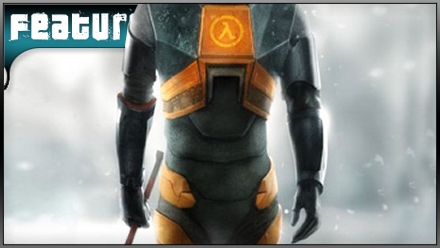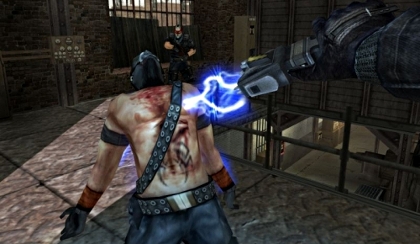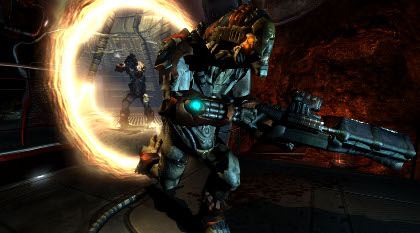The fifth and final part of Kristan’s epic retrospective.
2006 was, to say the least, a strange year for the FPS, with Microsoft’s determination to get the jump on its rivals in the next generation leaving the market in a state of flux. The highly successful release of the Xbox 360 the previous December had brought development of Xbox 1 titles to a grinding halt, with most publishers flocking to the upscaled Promised Land of next generation gaming.
Nevertheless, the first few months brought the FPS crowd a few interesting ‘last gen’ console shooters. Criterion’s Black was a particularly timely reminder that, actually, the last gen still had legs. It proved that PS2 and Xbox could produce fantastic-looking shooters in the hands of a supremely talented console developer.
Elsewhere, Commandos Strike Force demonstrated that RTS brands don’t translate particularly well to first person, while the ex-Argonaut crew at Rocksteady put a promising arcadey spin on the genre with their super-violent swear fest, Urban Chaos: Riot Response – but few would have bet that the same team would return with a game as amazing as Batman: Arkham Asylum.
Normal service was resumed in June with the PC release of Half-Life: Episode One, a download-only experiment which Valve initially hoped would usher in a new episodic age where four-hour slices of content emerged every six months. Although it reviewed well on release, time has been less kind to it, with most preferring the pace of the previous epics to this more frantic chain of action flashpoints.
At this point, episodic gaming was undoubtedly the Big Thing – a point underlined by the arrival of Ritual’s SiN: Episodes over Steam. Sadly, rather than heralding a bold new digital era, it failed to excite critics and flopped badly. No further episodes were released, despite nine being planned.
Of the remaining FPS releases that year, none stand out as classics, even if most promised that they would be. After an on-off development period of almost a decade, 3D Realms (with the help of Human Head) finally released Prey to mild acclaim, while Techland debuted the intriguing if system-sapping Wild West romp Call of Juarez on PC.
Undoubtedly the most hyped release of the year was Insomniac’s PS3 launch title, Resistance: Fall of Man. Hugely popular in the States, many European critics were less bowled over by its ‘Call of Duty with aliens’ gameplay and slightly underwhelming visuals.
Even less interesting was the actual Call of Duty 3, which Treyarch dragged into formulaic mediocrity; the developer also riled PC owners by withholding a version for the platform the franchise originated on. PC gamers could, at least, be content with a steady supply of exclusives in the shape of the futuristic multiplayer-oriented Battlefield 2142 and the flawed action-RPG/FPS gem that was Dark Messiah of Might and Magic, but in general, these were fairly lean times for mouse and keyboard marksmen.










 Satoru Iwata Video Interview - the late Nintendo president spoke with Kikizo in 2004 as 'Nintendo Revolution' loomed.
Satoru Iwata Video Interview - the late Nintendo president spoke with Kikizo in 2004 as 'Nintendo Revolution' loomed. Kaz Hirai Video Interview - the first of Kikizo's interviews with the man who went on to become global head of Sony.
Kaz Hirai Video Interview - the first of Kikizo's interviews with the man who went on to become global head of Sony. Ed Fries Video Interview - one of Xbox's founders discusses an epic journey from Excel to Xbox.
Ed Fries Video Interview - one of Xbox's founders discusses an epic journey from Excel to Xbox. Yu Suzuki, the Kikizo Interview - we spend time with one of gaming's most revered creators.
Yu Suzuki, the Kikizo Interview - we spend time with one of gaming's most revered creators. Tetris - The Making of an Icon: Alexey Pajitnov and Henk Rogers reveal the fascinating story behind Tetris
Tetris - The Making of an Icon: Alexey Pajitnov and Henk Rogers reveal the fascinating story behind Tetris Rare founders, Chris and Tim Stamper - their only interview? Genuinely 'rare' sit down with founders of the legendary studio.
Rare founders, Chris and Tim Stamper - their only interview? Genuinely 'rare' sit down with founders of the legendary studio. The History of First-Person Shooters - a retrospective, from Maze War to Modern Warfare
The History of First-Person Shooters - a retrospective, from Maze War to Modern Warfare
[...] Parte 5 (2006-2009) Categorías: VideojuegosTags: crysis, FPS, Halo, juegos, Quake [...]